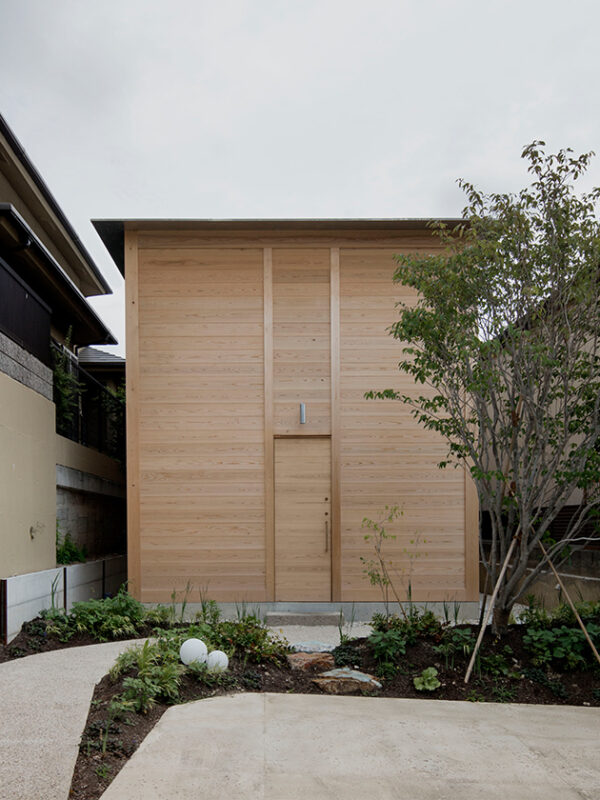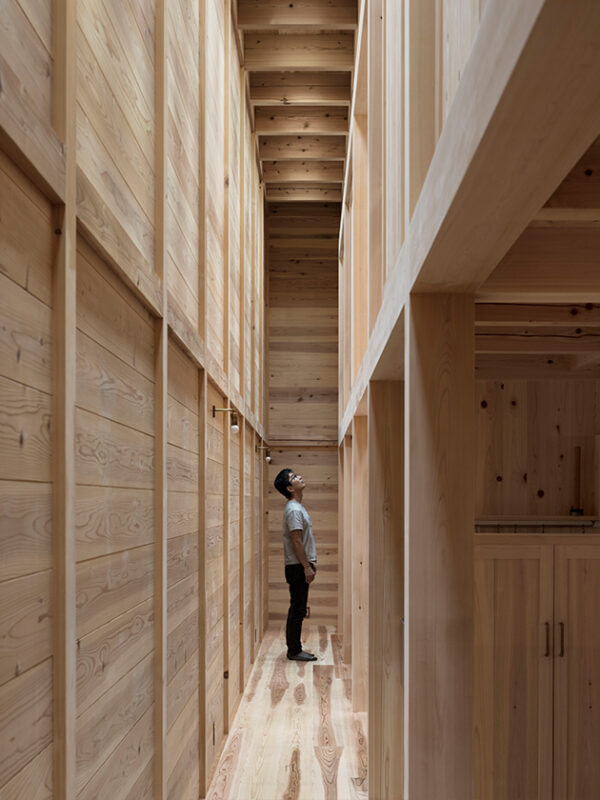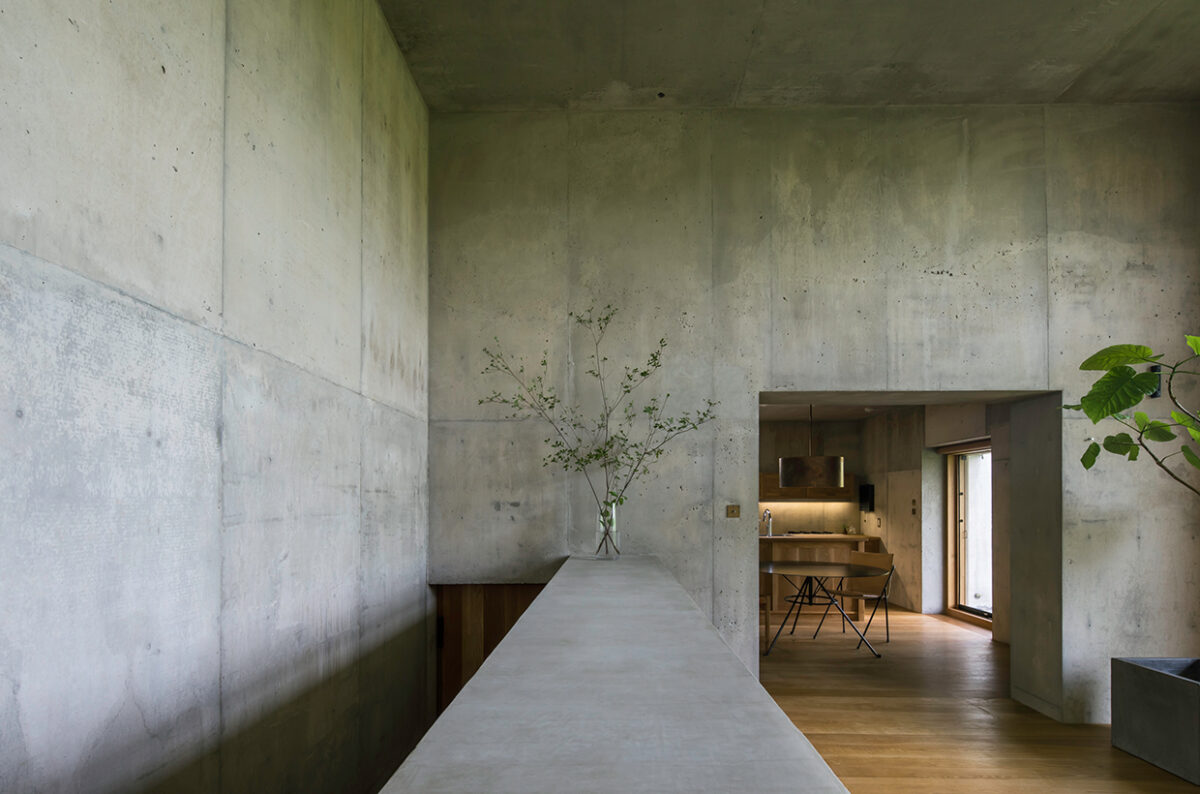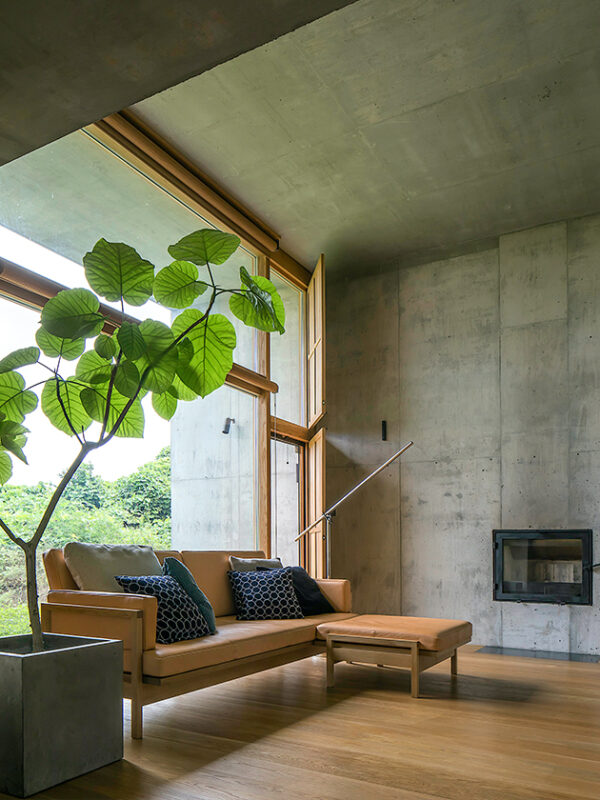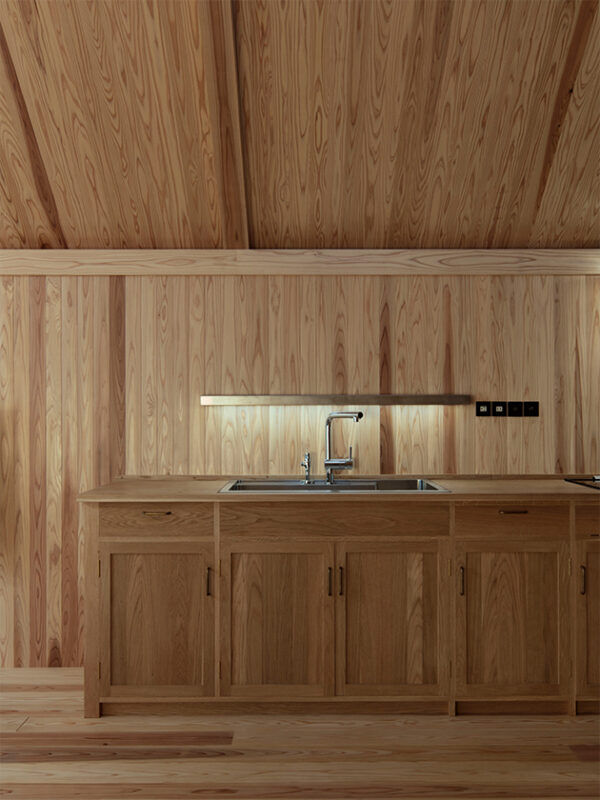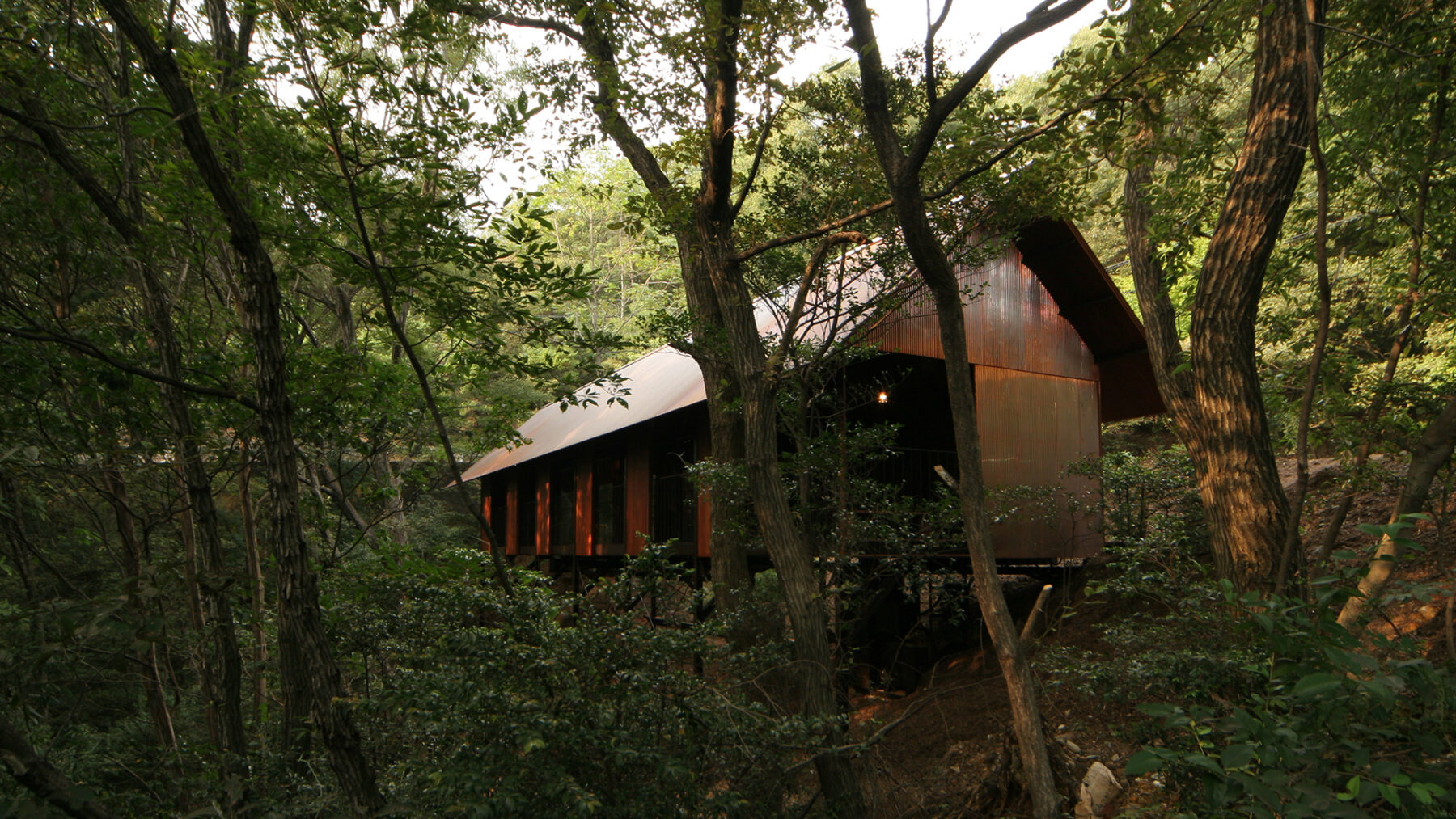Curative Architecture by Martin Tschechne | 3rd December, 2021 | Personalities
Sometimes architect Tomoaki Uno leaves out windows entirely. Sometimes the residents of his houses float in the air like birds. The Japanese architect’s principle: health that derives from beauty. An energy-giving environment.
Wabi-sabi, the principle by which architect Tomoaki Uno builds houses, can’t really be translated – it’s an intuitive experience. Uno takes his inspiration from the tea ceremony, ikebana and Japanese poetry. His goal: a healthy life in harmony with nature.
The young couple’s wish was, well, a bit romantic, maybe even eccentric, but in some way also understandable: They wanted to be alone, just the two of them, connected to the world only through a door that they could close tightly behind them. Tomoaki Uno took them at their word: He built them a house without windows.
“Not quite!” interjects the architect from Nagoya, Japan. “It has windows – but they’re on the roof. Only the clouds, the stars and the sun are visible.” It’s a compromise, he adds quickly. Building authorities do have their regulations, and windowless houses are not part of them. Is the ascetic-looking gentleman in metal- framed glasses simply a pragmatist? Or perhaps a romantic? He glosses over the question. Instead, he recounts what his happy clients exclaimed when he ran into them next: “We’ve never felt so free.”
“Liberate yourself from the persistent search for meaning. Be open to chance.” TOMOAKI UNO
There’s no question: Architecture affects the way people feel. It can stir emotions, provide a sense of relaxation, awaken self-confidence or pride in ownership. It can be calming or energizing. Can it also heal, ease suffering or even promote health? Healing architecture is a field of research in its own right. How many medications does a patient need who looks out of the window into greenery? How many does a person need who looks out of the window at the back of their neighbor’s house, right up against their own?
“We want to build hospitals that don’t look like hospitals,” says architect Christine Nickl-Weller, professor at the Technical University of Berlin, summarizing the goals of her lengthy career. “Daylight needs to return to the oppressive joylessness of concrete tower blocks.“ For more than three decades, she and her husband Hans Nickl have been specializing in projects that the two of them specifically call “healing buildings.” Public response has been growing apace. After all, it’s not about hospital hallways painted in attractive colors, meeting areas with coffee machines or creating ideal surroundings for medical equipment that performs new miracles with increasing velocity and at the same time requires ever more space and expertise. It’s about a balanced relationship between efficiency and humanity. About anenvironment that boosts the energy of its inhabitants, an environment that consoles, if necessary, that lifts the spirit and gives you a sense of security.
Tomoaki Uno specializes in buildings like these. Only seemingly contrary to the concept of Japanese humility and etiquette, it’s a way of building in which the form is almost uncompromisingly dictated by the needs of the individual.
One example is Takenoyama House 3, perched on an escarpment high above a narrow valley. The delicate, very open wooden building rests on a concrete base that both elevates it and anchors it to the rock. Anyone standing up there can delight in a panoramic view of the sky and a broad array of forest colors – even as they brush their teeth. Autumn is sometimes unbearably beautiful in that part of the world.
Light, grandeur and air to breathe – Sagamine
House provides as much of all three as possible. It stands on the edge of a densely built up residential area, but the architect put up concrete walls to block out the other houses and used glass frontages to open it up and create a feeling of being in the middle of nature – and alone in it. For his Yomogidai House, the clarity of the lines was enough to radiate an almost palpable sense of peace. Especially when the sun warms the air, and the cedarwood in the beams and walls becomes fragrant.
In the forested hills above Inuyama, Japan, lies Haguro House, like the famous cabin where Henry David Thoreau lived the secluded life he had imagined in the woods. For generations of readers in the Western world, his book “Walden” was an alternative to the breathless quest for something always bigger, always better. Uno pays tribute to the American writer, as Haguro House also retreats deeper into the woods with every passing year. The copper cladding, covered with green patina, will eventually merge into the foliage.
Ogimachi House is the architect’s concerted foray into the art of healing. It was built for a man who was looking for a house for his mother, who was unwell. What she needed was peace, both acoustic and spiritual. So once again, Uno built something without windows. But with 37 glazed openings in the roof and a clever layout of the rooms, he ensured that even the lower level was filled with light. Japanese carpenters can work wonders. Here, they used nothing but cedar and cypress wood, piecing the building together without using a single nail. The tranquility is absolute. And, incidentally, the resident of the building seems to have recovered her health quite splendidly …
“I believe in the beauty of simple things,” says the architect, and perhaps it’s typical of Western attitudes to immediately start enquiring about the details. How exactly does healing architecture work? How can it be implemented? Uno-san hesitates. “Let go of the idea that harmony must be planned,” he recommends. “Liberate yourself from the persistent search for meaning. Be open to chance.”
And what precise role does chance play in his architecture? Wordlessly, Uno produces a stack of photographs: cracked concrete, greenery growing riot between steps of roughly hewn stone, light switches made of tarnished brass and iron doors covered with a hint of rust. Then he starts talking about the rough, seemingly untreated surface of Japanese ceramics. About the spare gestures of Noh theater, the Japanese tea ceremony and haiku poetry. About ikebana, the art of arranging flowers, branches and tufts of grass in a precise choreography that reflects the diversity of nature. Only after that does he name the formula, the principle behind all these approaches. It’s a synthesis of curiosity, an impudent desire for acquisition, and keeping a respectful distance – something called wabi-sabi.
Wabi-sabi can’t be translated. It’s not accessible for someone who was molded by Western culture. Humility plays a role, as does modesty, but also something like joy in that demeanor: that’s wabi. Sabi has to do with respect for lived life, maturity, patina and a skeptical approach to overly polished beauty. It’s transient.
The California architect Leonard Koren attempted a conceptual approach, and what emerged was a game. It sets Western modernity against the principle of wabi-sabi as though they were antagonists. They aren’t: Artists and architects within the European tradition have always readily followed the Japanese call for simplicity, and respect for materials and natural forms. But it sharpens one’s sense for the mindset that emerges from the traditions of Zen and Shintoism when the two opposing ethics seem to stand for “forward-looking” and “rooted in the present,” “glorification of technology” and “glorification of nature” or “logicalrational world view” and “intuitive world view.” It becomes clear that, in wabi-sabi, ethics and aesthetics coalesce. Concentrate on the real, liberate yourself from that which is unnecessary, accept the inevitable.
Can this way of thinking be helpful in building a big hospital? There’s no room for chance in the world of evidence-based, high-tech medicine, but one can contemplate. Tomoaki Uno provides inspiration. “Why do art and nature bring us peace?” he asks. “Because they’re the precise opposite of informed, rational order. Their only message is beauty and they neither tolerate nor suffer comparison.”
